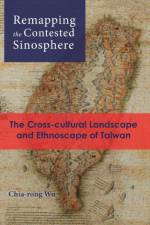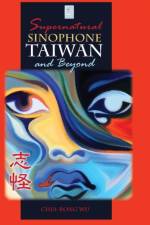von Chia-Rong Wu
125,00 €
In recent years, Sinophone studies has introduced to a broader audience multiple ways of examining Chineseness beyond the traditional China-centered view. Whereas a Sinophone product, whether fiction or film, reflects on the close relationship between language and place, a localist agenda from the margins of China and Chineseness is brought to the fore. It is important to consider that Sinophone literature both embodies an attachment to cultural China and encompasses vital issues of ethnicity and politics with respect to local contexts. To be more precise, Sinophone literature points to constantly evolving changes and adaptations into a profound combination of Chineseness and local identities. Surprisingly, there is no scholarly monograph focusing on the literary production in Sinophone Taiwan so far, even though Taiwan is defined by Shu-mei Shih as a major site of Sinophone literature as a result of its serial and layered colonial condition. What does then Sinophone Taiwan mean? According to Shu-mei Shih, The Sinophone Taiwan, for instance, is only an aspect of Taiwan s multilingual community where aboriginal languages are also spoken, and postmartial law Taiwan cultural discourse is very much about articulating symbolic farewells to China. In other words, Sinophone Taiwan is loaded with an ambivalent attitude towards the Chinese state as well as concept of cultural China while drawing on exclusively localized experiences. This first scholarly monograph focusing on the literary and cultural geography of Taiwan through a Sinophone lens is therefore a step toward filling the gap. While reexamining the cultural and political complexities of Sinophone Taiwan, this book also recognizes the narrative of the strange as a widely adopted artistic form in highlighting Sinophone practices and experiences separated from the China-centric ideology. The study argues that the narratives of the strange in Sinophone Taiwan cross the boundaries between the living and the dead as well as the past and the present, in response to a pastiche of phantasm, Chinese diaspora, gender discourse, and transnational politics. With detailed analysis, this book brings into focus the notion of zhiguai historiography in an attempt to shed light on the Sinophone narratives of the strange and to demonstrate how the topic can help illuminate the social and political implications of literary texts beyond contemporary China. By analyzing the literary tropes of strangeness, this research deals with the critical issues of the cultural exchange between China, Taiwan, and Sinophone Malaysia. The book explores the idea of the strange narrative as a fluid, border-crossing phenomenon that is impossible to ignore in Chinese ethnic writing. In this light, the narrative of the strange refers to the storytelling wedded to the motifs of ghost haunting and/or the figurative manifestation of anomalies. In recounting diverse cultural spectacles of the strange, this book builds on such topics as the ghostly Chineseness, lingering aboriginal spirits, and eccentric identities with respect to ethnic and sexual complexities. Therefore, narratives of the strange are examined from three interrelated perspectives in this book. First, spectral and monstrous appearances can be associated either with a nostalgic attachment to the past or with an emotional resistance against historical traumas. Second, the scope of the strange can be expanded to bring into play the figuration of the ghostly/monstrous together with the magical representation of uncanniness, wonder, and fantasy. Third, strange figures can be posited as the invisible, marginalized subjects like sexual and ethnic minorities within a dominant social framework. Intriguingly, the equation can also be inverted by creative writers to make strange figures voiced and visible in a political light. Collectively, the scope of the strange includes the hauntology, the ghostly, the monstrous, the uncanny, the magical, and the fantastic. Supernatural Sinophone Taiwan and Beyond will be of interest to scholars and students in Asian studies, particularly Sinophone studies as well as Chinese literature and culture.


